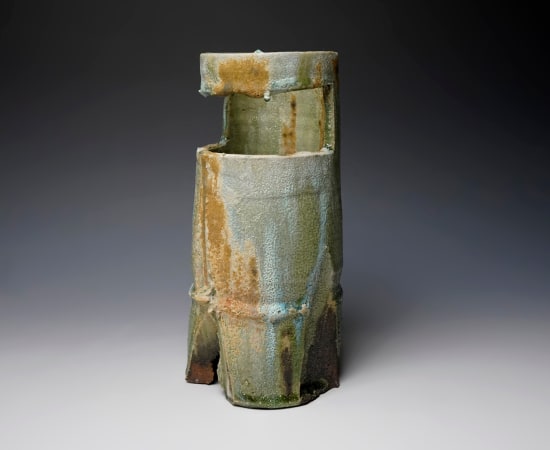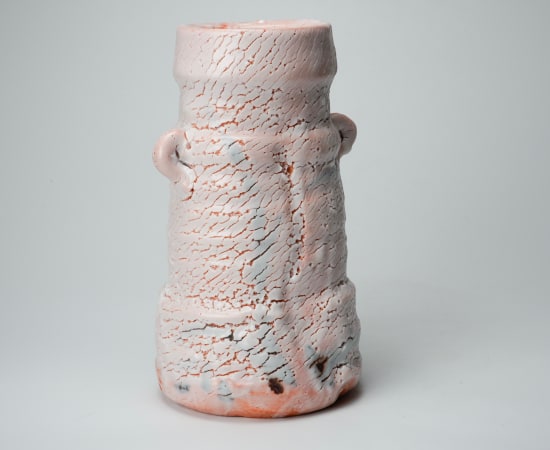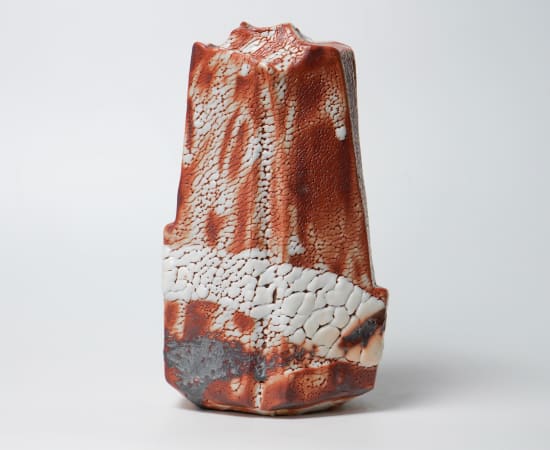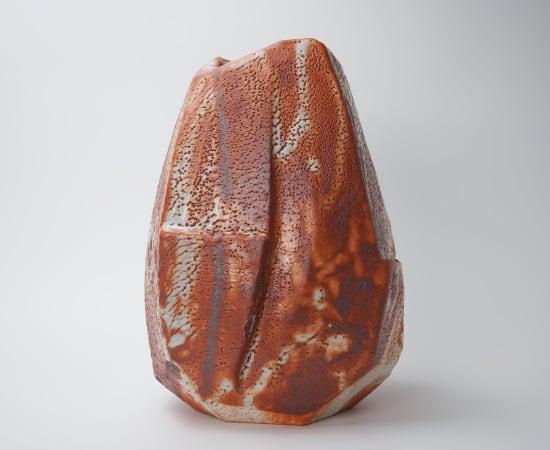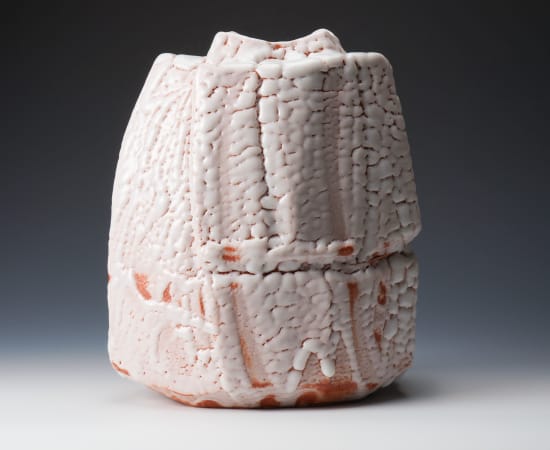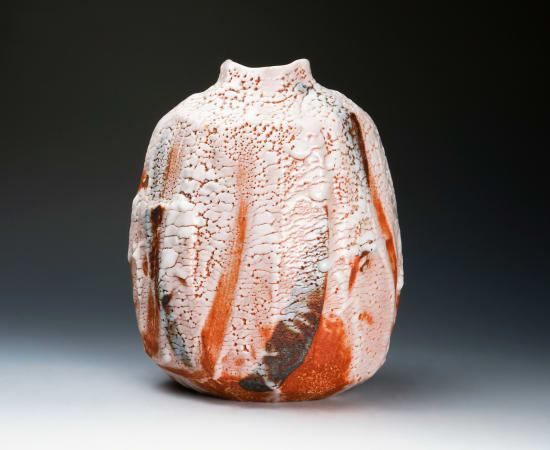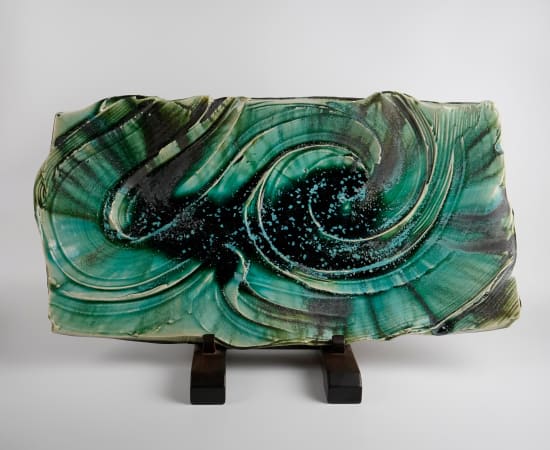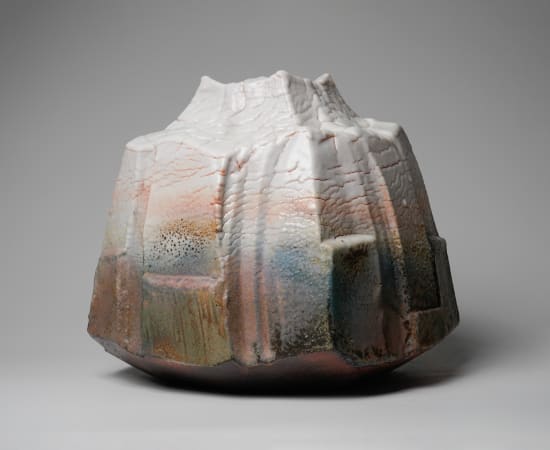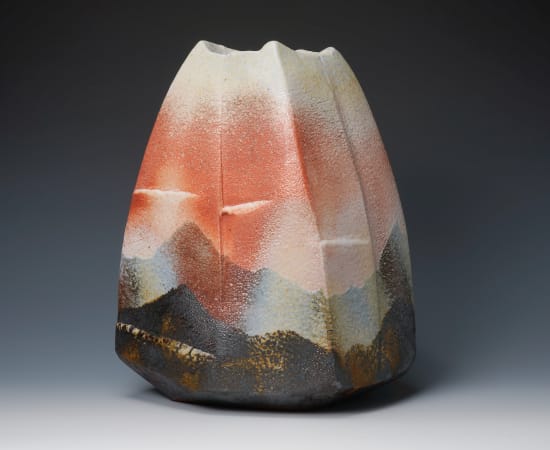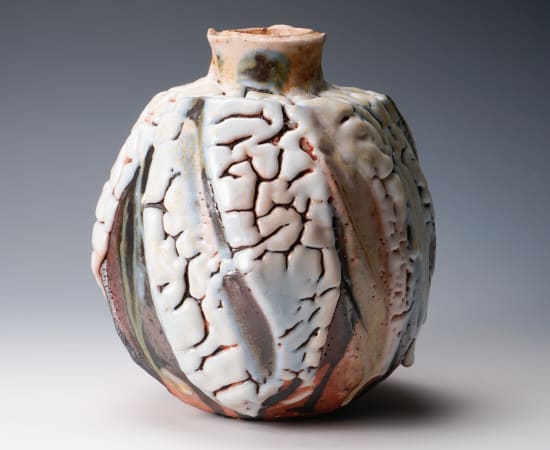Born in Toki city, Japan in 1947, Hayashi Shotaro is a celebrated Japanese artist who specializes in ceramics. He is famous for his masterful Mino glazes, such as Shino, Oribe, and most notably, he is the contemporary pioneer of the uncommon "Manyosai" glaze. He is the recipient of the prefectural award of a Beholder of Intangible Cultural Property of the Mino prefecture. He was originally a salaryman in Nagoya before moving to Mino and pursuing the art of ceramic craft. His work represents the tradition of Oribe and Shino ceramics in Japan.
Hayashi received the highest award at the Gifu Prefectural Art Exhibition in 1968, before going on to receive the prestigious Governor’s Award at the Asahi Ceramic Exhibition in 1971 for his blending of innovation in marrying traditional glazes with modern forms. Since then, he has had a long career of illustrious solo exhibitions, as well as inclusion in the permanent collections of many Japanese and international art museums. His work fits in both categories of traditional and modern, speaking to his respect for the roots of Kogei in Japanese ceramic art history. Hayashi’s contemporaries include many up and coming names within Mino-yaki, having taught lifelong students of Oribe, including Higashida Shigemasa.
Though he was raised as a potter’s son, Hayashi Shotaro chose to pursue a life in business after high school. He eventually found a job with a company in Nagoya, but life as a “salary man” did not satisfy him and he returned to his hometown to study pottery under his brother. His innate talent quickly manifested itself.
Hayashi is an artist who works in the tradition of Shino ware, first developed in Japan during the Momoyama period in the 16th century. His robust forms are complimented by a softness of surface glaze that invites the viewer to relish the pleasures of the Shino technique. He is the contemporary purveyor of the uncommon "Manyosai" glaze.
